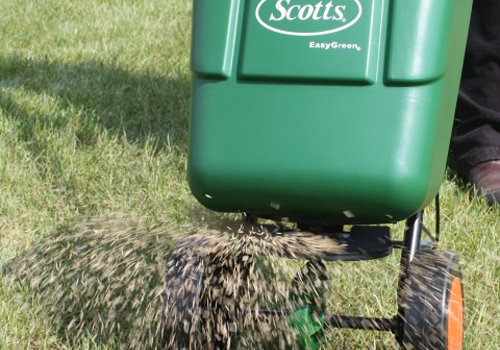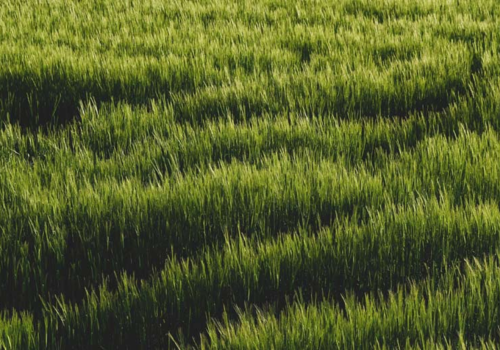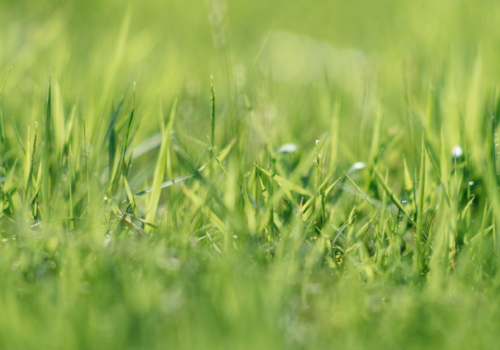
Mowing Your Lawn: Timing, Technique and When to Stop
Knowing when and how to mow your lawn properly is one of the most important parts of maintaining healthy grass, and it’s not just about keeping things tidy. Regular mowing encourages stronger root growth, helps your lawn resist weeds, and improves colour and density throughout the year.
As the seasons change, so should your mowing approach. In spring and summer, your lawn will grow quickly and benefit from frequent, lower cuts. In autumn, that pace slows down, and it’s important to adjust your mowing routine to suit the conditions. By the time we reach late October or November, many UK lawns are ready for their final trim of the season.
Understanding the right time to cut and when to stop can help avoid stress, scalping, or damage to your grass. Whether you’re wondering when to give your lawn its last cut of the year or how soon to mow a freshly seeded area, getting the timing right will always lead to better results.
There is more to mowing your lawn than first meets the eye, and depending on your location, the demands can be very different. Here is our guide to the lawn mowing calendar.
Moving your lawn calendar
March
Your lawn will begin to grow in the spring, so start off with a high cut at the start of the season to allow the grass to establish. If possible, wait for the grass to be dry, although that is easier said than done in the British springtime! If you cannot find a day when the grass is perfectly dry, then reduce the speed at which you push the mower to avoid tearing the grass as much as possible.
Springtime is also a great time to give your grass all the nutrients it needs for healthy growth and a great appearance. We recommend applying BS Spring & Summer Lawn Fertiliser to your newly cut lawn as it releases nutrients over a 6-8 week period and can be applied from March to August.
April
As temperatures increase, the lawn will grow more quickly, so start to mow every two weeks, then increase to a 10-day cycle until you are eventually mowing weekly. Keep the cutting height high as the lawn is still in its growth phase.
May and June
Mow weekly if possible during May and June. It is now time to lower the cutting height if you wish, but stay over 4cm for the time being.
July and August
A lot depends on the summer weather. If it is still wet, then continue with the May and June routine, but if we are lucky enough to have a dry summer, then reduce the mowing frequency to every fortnight. Raise the cutting height if it is very hot, to allow the grass to keep more of its moisture and avoid your lawn being scorched.
September
The end of August and September is a good growing time for your lawn due to the autumn rains, so you will probably need to mow frequently. You can lower the cut if you raised it for a hot summer, but if your lawn suffers from moss, you should instead raise the mowing height to discourage its growth.
Autumn is a good time to treat your lawn to help prevent turf diseases and also provide nutrients throughout the winter period. Our BS Autumn & Winter Fertiliser has the addition of iron, which gives your grass a deep green colour and is perfect for applying from September to November.
October
In October, you are nearly at the end of the mowing season, so gradually start to raise the height of the cut to its eventual winter height.
November
For the final regular cut of the year, you might consider using a rotary mower on a dry lawn to suck up any remaining autumn leaves. Set the height to its maximum to allow the lawn to rest over the winter.
Winter lawn mowing
The only maintenance you need in winter is the occasional light 'topping' cut. Make sure the soil is firm and the grass is relatively dry. Never mow if the lawn is frosty or if freezing is due within 24 hours.
If you would like to read more about lawn care, take a look at our 'Caring for Your Lawn' article for additional hints and tips.
When to Stop Cutting Grass in the UK
As the temperatures drop, grass growth slows and eventually stops. You’ll typically find that growth all but stops when overnight temperatures sit at around 5–6°C. That means most lawns in the UK stop actively growing between late October and mid-November. In southern England, this might stretch slightly into November, while colder northern areas will see growth slow earlier in the month.
Homeowners frequently ask when they should stop cutting grass for the year. Look out for signs: sparse clippings after mowing, slow regrowth between cuts, or a wet, boggy surface. If the mower hardly picks up any grass, it’s a reliable signal to pause until spring.
Aim for your last grass cut of the year to leave the sward at around 4–5cm. That gives the lawn insulation for winter and reduces stress on the crown. Cutting too low before winter is often the reason lawns suffer from frost damage and disease.
When to Cut New Grass for the First Time
One key question is when to cut new grass. Timing is crucial here. Wait until the newly sown grass reaches a height of 5–7cm—typically 3–6 weeks after sowing, depending on weather and seed mix. If the soil is firm and the shoots so tall, you can mow.
Start with a high cut and trim only the top 1–2cm. Keeping blades sharp is essential as dull blades tear seedlings rather than cutting them cleanly. Mowing too early or too low risks pulling out the new shoots and delaying establishment.
Treating your new lawn gently in the early stages makes a big difference to its resilience later on. A clean first cut signals that you've probably established good root structure underneath.
(See the BS Lawn Patch Repair Kit if you have uneven patches in your new lawn.)
Tips for Late-Season Mowing
October and early November call for care and slight adjustments:
- Raise your mower height: In October, gently bring the blades to a higher setting so you’re cutting the grass shorter, but no lower than 4 cm.
- Light, dry cuts only: You’re better off with light topping rather than a deep cut. Mow only when the grass is dry and the ground isn’t boggy.
- Mulch or rake: A rotary mower will chop up small leaves, adding organic matter. Raking removes them entirely, preventing moss issues.
- Tread carefully: Avoid walking on frosty or wet turf to prevent soil compaction and damage to crown tissue.
You can continue mowing lightly into November in mild areas, but only if the turf is dry, and frost isn’t expected. Before winter sets in fully, consider applying a treatment like KissMyGrass Autumn & Winter Vitality Liquid Lawn Fertiliser to strengthen the grass ahead of the colder months.
Should You Mow Grass in Winter?
In general, mowing during winter isn’t necessary. Most lawns will benefit more from rest during these cold months. If you do choose to mow, ensure that:
- It’s only done on a mild, dry day
- The grass is dry and firm underfoot
- There’s no frost and no risk of freezing within 24 hours
You’re aiming more for tidiness than growth. In snowy or frozen conditions, leave the lawn alone until spring.
Further Reading
For more tailored advice, take a look at our Lawn Patch Repair Kit and the Grass Seed Calculator, great tools for spring renovation.
To support growth later in the year, consider using our KissMyGrass Autumn & Winter Vitality Liquid Lawn Fertiliser or extending feeding into winter with KissMyGrass Year-Round Rapid Green Liquid Fertiliser.
Frequently Asked Questions
How do I know when to stop mowing my lawn?
Rather than relying on a calendar date, focus on signs like sparse clippings, slow growth, and cooler weather below 5 °C. When mowing no longer produces much and growth is slow, it’s time to stop.
Should I mow new grass if it looks uneven?
Only if the grass is at least 5 cm tall and the soil is firm. If you mow earlier just to even it out, you risk pulling up patches or damaging weaker seedlings.
Can I mow grass in mild winter weather?
You can, but only when the ground is dry, the grass is short but firm, and no frost is in the forecast. Always skip mowing if there's any frost risk.
What happens if I mow new grass too early?
Early or low mowing can uproot young seedlings or weaken patchy areas. It’s better to wait until the grass is well rooted and tall enough for a safe trim.
Is it better to mow less frequently in autumn?
Yes. As growth slows, increase the interval between cuts and raise the mower blade. This protects both the grass and soil during colder months.


